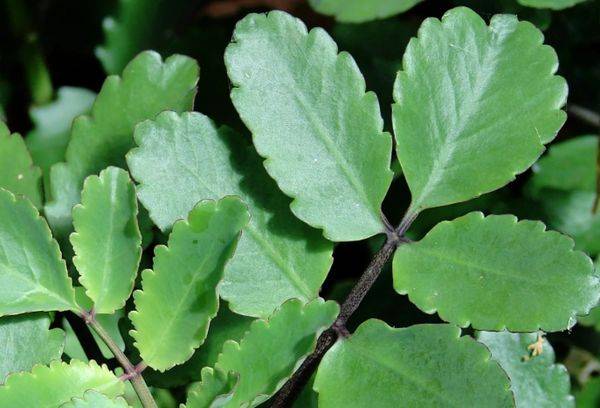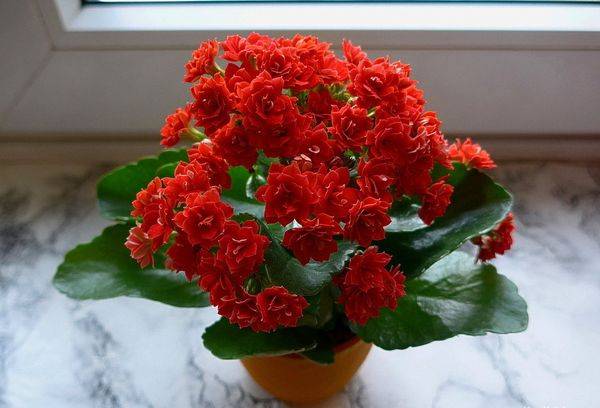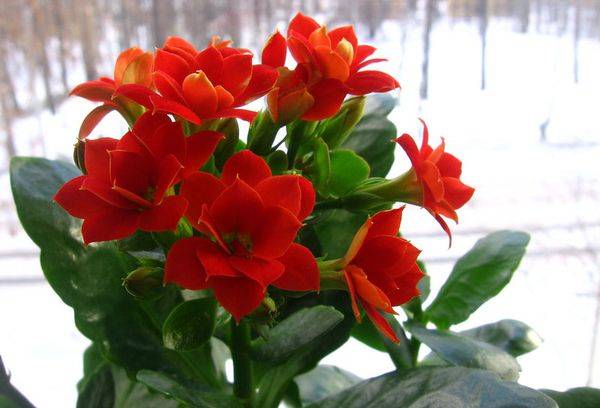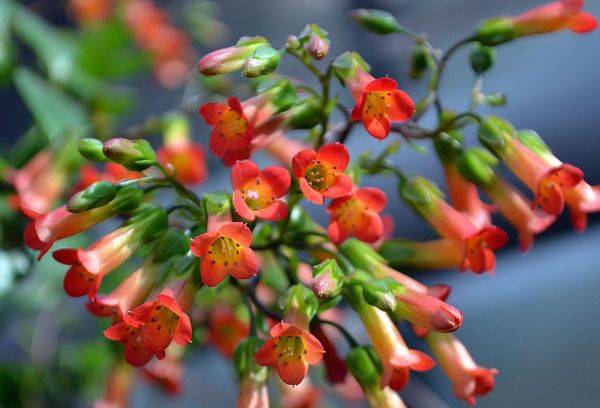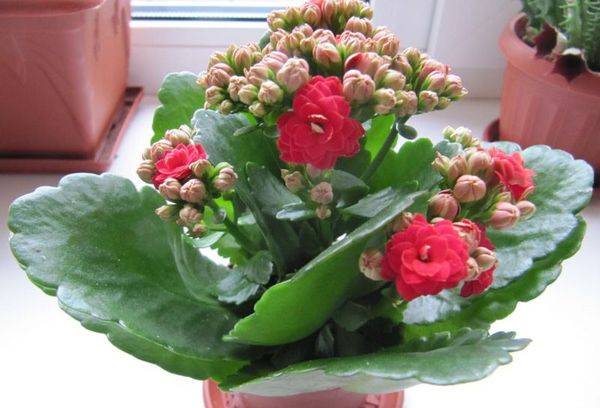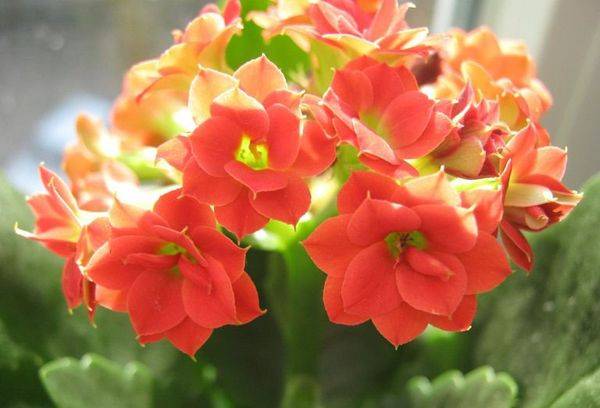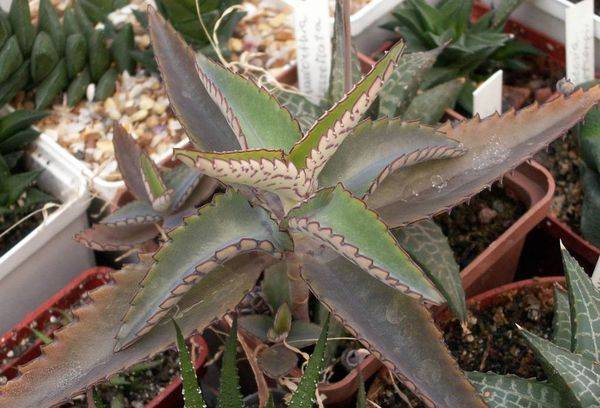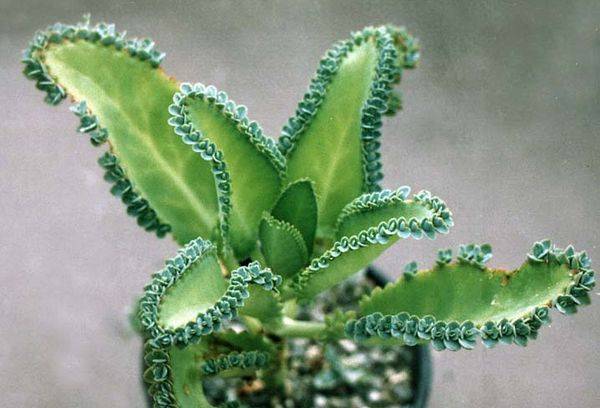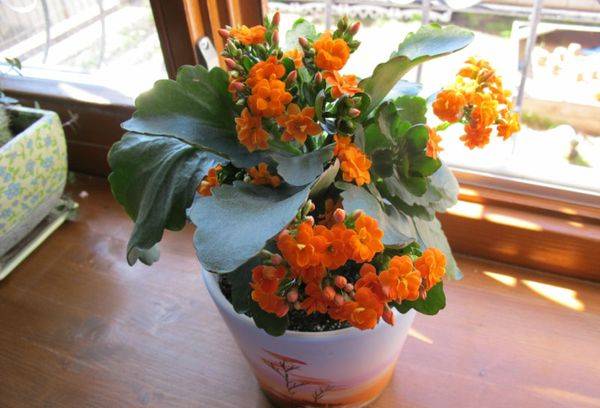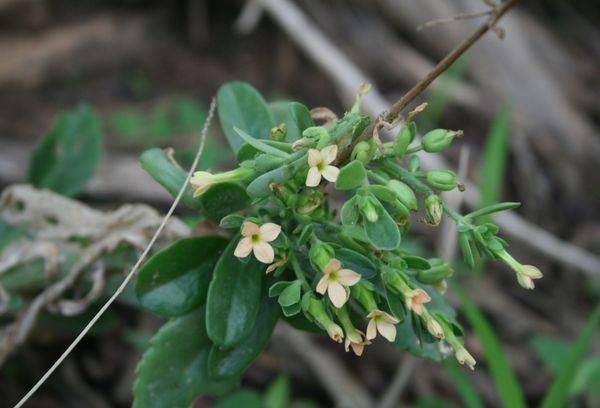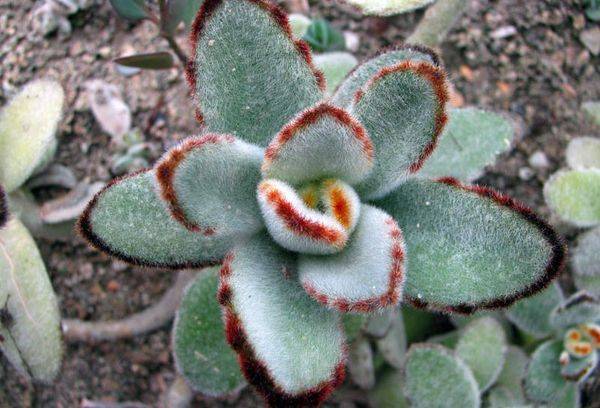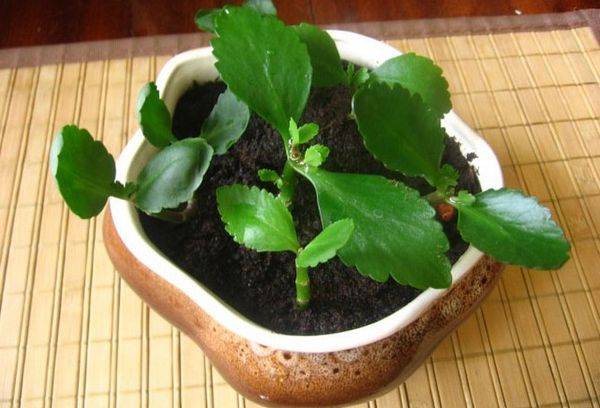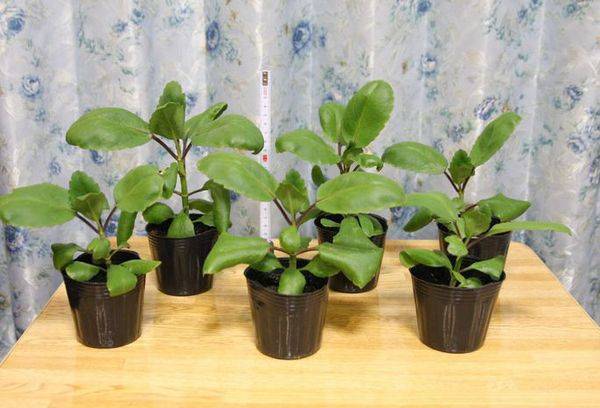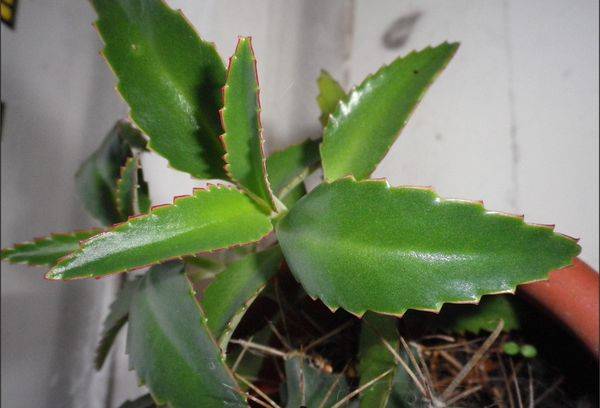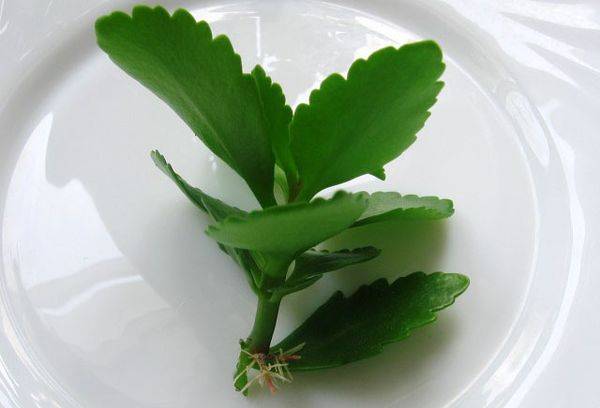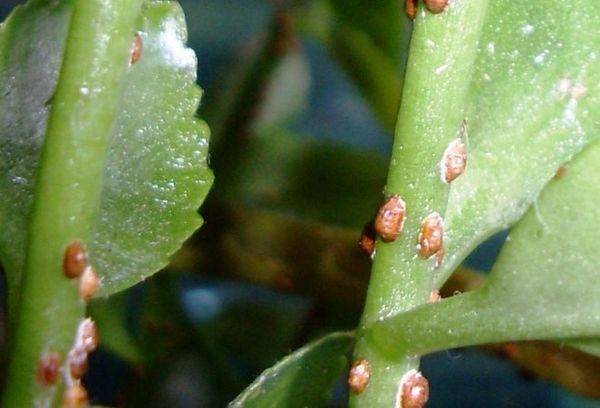Kalanchoe at home - the nuances of caring for a home helper
Content:
Indoor plant Kalanchoe combines benefit and beauty. It is quite common among indoor flowers on the windowsill. How to properly care for Kalanchoe at home, so that its flowering is lush, long and bright?
Kalanchoe on the windowsill - decoration, medicine, beauty
Kalanhoe plant came from distant Madagascar, more than 200 species of this culture grows in tropical countries - in Africa and the East, - in Asia, some species are found in South America. Such geographical dispersion made representatives of this culture completely dissimilar to each other.
They are united by flowering and healing properties. Florists respect Kalanchoe for a spectacular appearance, a variety of species and forms, unpretentiousness and ease of cultivation.
The main representatives of culture
For its wide distribution, great popularity and therapeutic effect, Kalanchoe is called the "flower of life." The plant belongs to the genus succulents. It easily adapts to environmental conditions, pleases the eye with greenery and lush flowering, fragrant with aroma. The juice of its leaves is used in folk medicine and cosmetology.
The most popular types and names of Kalanchoe:
- Kalandiva This decorative flower is most popular as a home plant. The magnificent cap of terry peduncles is its main decoration and dignity. It is important that the flowering period of Kalandiva can last up to six months. Caring for this representative at home will not be difficult - watering, top dressing, pruning.
- Mangin. It differs from other species by its miniature growth, up to 15 cm, and the unusual appearance of the flower, which looks like an elegant bell. Easy to grow indoors. Blooms once a year.
- Rosaline. It is distinguished by flowers of pastel shades, unusual in structure, similar to small roses. With proper care, it blooms profusely and for a long time. It requires rare watering - once every two to three weeks.
- Blossfeld. Compact plant with a long flowering period. To plant and grow this variety of Kalanchoe is very simple - it is viable and unpretentious, easily tolerates a deficiency of moisture. The flowers have a different color - from yellow to red - which are collected in inflorescences in the shape of an umbrella.
- Degremon. A medicinal plant, characterized by a large and dense triangular leaf of a grayish-green hue, slightly curved inward. In height, it can reach 50 cm. A characteristic feature is that at the edges of the leaves of Degremon there are numerous children who hastily leave the mother plant and take root not far from it.
- Cirrus Kalanchoe. The structure of this plant is dissected leaves, along the edge of the leaves are sleepy processes that are similar to drops. A healthy flower has a bright green tint. In places of cut, the plant gives off a lot of juice. On the windowsill, its maximum growth reaches 50-60 cm.
- Terry Kalanchoe. This plant has unusual flowers of terry texture, their color is saturated pink. It grows best in bright and airy rooms at room temperature. The method of its propagation is daughter shoots, which, as necessary, are transplanted into separate pots.
- Kalanchoe town. This is a perennial indoor, similar to a bush.The leaves are dense elliptical in shape, the stem below is covered with wood, the flowers are yellow or orange. With proper care, it can reach a height of 2 meters.
- Kalanchoe felt. The peculiarity of this plant lies in the leaves, which have an oblong shape, green color and are covered with a thick light fluff. Dark brown denticles extend along the edge of the leaf. The room usually does not bloom. In wildlife, gives inflorescences a bright purple hue.
Kalanchoe foliage is covered with a protective film that prevents strong evaporation of moisture. This property is acquired by the flower due to tropical conditions of origin. Fleshy dense leaves accumulate fluid with nutrients, which is used by the plant during a period of insufficient moisture.
Choosing a Kalanchoe for a home
To create a healthy and favorable atmosphere in the house you need flowers. By beauty, Kalanchoe is compared with a rose, and in terms of benefit - with ginseng:
- The juice of therapeutic Kalanchoe has a powerful bactericidal, regenerative and anti-inflammatory effect, so a section of the stem or leaf is applied to wounds and scratches on the body.
- In folk medicine, there are many recipes that make it possible to use this flower with great benefit. It treats skin and gynecological diseases, improves vision, helps with flu, colds and gastrointestinal diseases.
- A pleasant psychological aura is created around the Kalanchoe flower, which contributes to the elimination of conflicts and the establishment of relationships.
- Blooming Kalanchoe will successfully fit into the interior of any room, it will cheer you up and give life energy. It will be relevant in the bedroom and in the kitchen, in the living room, children's room and study.
- Kalanchoe near the computer on the desktop is a cure for eye diseases and stress. Fleshy foliage absorbs radiation, and picturesque flowering will relieve negative emotions.
Tip
purityis.decorexpro.com/en/ magazine recommends that the flower becomes more magnificent and voluminous, in the summer, pinch the tops of the shoots. These actions are aimed at stimulating the development and growth of the lateral branches.
Kalanchoe on the windowsill pleases the eye with its lush greenery and abundant flowering, it is necessary in the household and healthy. At the same time, minimal care is required.
How to care for Kalanchoe on the windowsill
Vital conditions and the degree of care affect the duration of flowering and the quality of peduncles. Kalanchoe loves care and affection, and responds to the careful handling and attention to himself with gratitude in the form of bright and beautiful flowers.
Activities for the care of the Kalanchoe indoor flower:
- Landing. The optimal soil composition for Kalanchoe is sod taken in equal parts, flower soil, peat and sand. Impregnations of coal or perlite are allowed; a drainage layer is required in the pot.
- Conditions. Kalanchoe loves enough light, its excess can burn the plant, and the deficiency will make it thin and weak. It blooms only under the condition of a 12-hour daylight, therefore, in the autumn-winter period, artificial lighting should be arranged on the windowsill. The maintained temperature range is quite extensive - from +15 to + 30 ° C. Humidity is not important for him, the plant tolerates dry and moist air equally well.
- Moisturizing. It is necessary to water Kalanchoe regularly, in winter less, in summer - more often and more plentifully. Overmoistening is unacceptable, since the root system can rot, which will lead to the death of the plant. Water needs to be poured under the root, and not on the leaves and stem.
- Top dressing. In the spring-summer period, Kalanchoe is recommended to be fertilized. Permissible feeding frequency - 1 time per week. In the fall, before budding, fertilizer application can be resumed.
- Pruning. Pinching and pruning Kalanchoe is necessary to give the bush neatness and shape. Pinching shoots is carried out on young plants. After flowering, it is necessary to make sanitary pruning of branches and leaves.
- Transfer. Kalanchoe requires transshipment when the size of the pot becomes small for him. In a new pot of larger volume, the plant is transplanted with a lump of earth. This will help adapt the flower to a new place. After relocation, a short feeding is useful.
- Reproduction. Kalanchoe can be propagated in three ways - by children, cuttings or leaves. They are placed in moist sand until the roots appear. When the root system grows to 1.5-2 cm, the plant can be planted in another pot. The adaptation period is short - lasts one to two weeks.
Tip
The fleshy leaves of Kalanchoe contain a supply of fluid, so the flower can do without additional moisture for some time. Excessive watering is harmful to the plant - it can provoke mold and putrefactive processes.
Traditional seed propagation is also suitable for Kalanchoe. For this, the seed is laid on the soil, sprinkling with earth is not required. The container is covered with a film on top to create a greenhouse effect. Periodically, you should open this "greenhouse". You can wait for seedlings in a month and a half, not earlier. Shoots with 2-4 leaves are viable and transplanted into new pots.
Growing problems: why leaves turn yellow and Kalanchoe does not bloom
In its homeland, in the tropics, Kalanchoe blooms for several months in a row - from mid-summer to late autumn. You can extend the flowering time at home, if properly grown and properly looked after the flower.
First aid - questions and answers:
- Why did Kalanchoe stop growing? The most likely cause is improper soil and insufficient soil fertility. Transplanting into the right soil and proper care will help the plant recover.
- Why is it not blooming? An excess of fertilizers in the soil often leads to the absence of peduncles. A smooth decrease in top dressing will allow for budding and subsequent flowering. Fertilizer should be dosed and not too often.
- Why does the foliage turn yellow? Yellowness on the leaves is the result of excessive exposure to ultraviolet light on them. In this case, experts recommend changing the location of flower pots so that direct sunlight does not fall on the greenery.
- Why does he fade? Insufficient growth and development of the flower occurs if useful and nutrient substances do not reach its stems and leaves. Possible causes are diseases, parasites, fungi and mold.
Tip
Kalanchoe is on the official list of medicinal plants. Its health benefits lie in the juice extracted from the leaves. They treat many diseases - from cuts to colds.
Pests and diseases of Kalanchoe
Blooming hybrids that do not bloom repeatedly are usually on sale. What to do? The plant from the store should immediately be transplanted into a suitable pot with the required soil mixture. Expanded clay or brick crumb drainage at the bottom is a prerequisite. Transplanted Kalanchoe needs sanitary pruning of excess peduncles, dry shoots and wilted leaves.
List of possible diseases:
- Powdery Mildew With this disease, whitish spots cover the foliage, after which it falls off. The reason lies in the insufficient moisture of the flower and the dryness of the air around it. The disease is contagious and can spread to other plants in the house. To get rid of powdery mildew, it is recommended to intensify watering and spray with fungicides.
- Blight rot. The disease is characterized by the formation of brown spots in the places of branching stems. The reasons for its occurrence, most likely, are too hot microclimate in the room, excessive watering and poor ventilation of the roots. To restore the plant, it is necessary to change the soil and strengthen the drainage, place the pot in cooler conditions.
- Aphid. These are insects of green color, parasitizing on foliage and stems. Aphids feed on plant sap, so foliage turns yellow and falls, the stem does not grow, and flower stalks dry.Measures to combat aphids - thorough washing of the flower with potash or laundry soap. After this, Kalanchoe is exposed to fresh air to allow it to dry.
- Shield. Insects infect indoor plants and leave a gray coating. After the disease, the plant is difficult to make bloom, since the scab emits caustic mucus, which adversely affects Kalanchoe. Flower treatment is carried out with any special alcohol-containing solution for home plants.
A healthy and well-groomed Kalanchoe will become a real decoration for a window sill in an apartment, house or cottage. It will help in the household and eliminate health problems. For him to please his fabulous flowering for a long time, it will take quite a bit of time and effort. The main thing in this business is watering, conditions, nutrition and protection!
